Bang & Olufsen Timeline
The Danish electrical engineering concern B&O (Bang & Olufsen) was founded in 1925. The B&O brand produces consumer electronics, including audio components, televisions, and telephones. The conceptual design of the products remains the hallmark of the brand.
Radios from Struer
B&O was founded by the Danes Peter Bang and Svend Olufsen, who was fond of radio technology from an early age. In the 20s of the last century, the idea of transmitting information by air was in a special trend and occupied the mind of almost every young person.
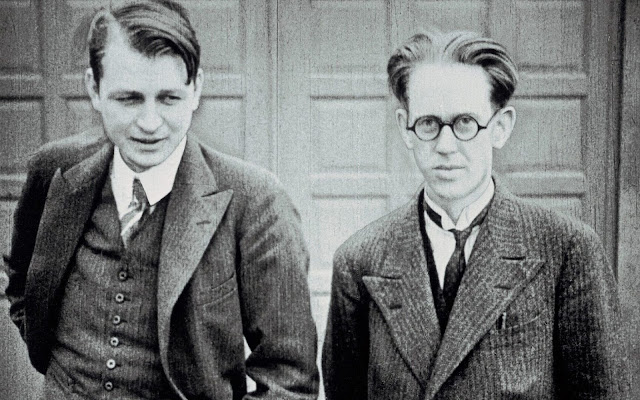 |
| image credit: Bang & Olufsen |
Peter was the son of the famous businessman Camillo Bang and was brought up in a wealthy family in Copenhagen, who had the opportunity to enjoy such benefits of civilization as electric lights, telephone, gramophone, and their own car. In 1924 he graduated as an engineer and left for the United States to gain experience in a large radio plant owned by General Electric. After six months of practice, Peter was aware of the latest advances in electronics and had the idea of organizing a factory in his homeland to produce such devices.
At that time, Sven Olufsen was just looking for an intelligent practitioner who would help him realize ideas related to the release of radio engineering. Simon Peterson, a longtime friend of Sven's, advised him to contact Peter Bang.
As a result, on November 17, 1925, Olufsen and Bang organized a small laboratory workshop for the development and production of radio receivers. For the laboratory, the attic of a large mansion on the Quistrup estate, provided for the use of Olufsen's parents, was specially equipped. The mansion was located in the small town of Struer, located in the western part of the Jutland Peninsula.
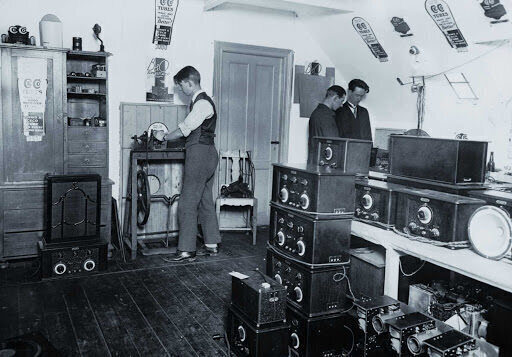 |
| image credit: Bang & Olufsen |
The partners divided their responsibilities in the company they had just organized as follows: Peter went into technology, and Sven concentrated on finance and other business activities. Two years later, Bang and Olufsen opened the first radio factory near Struer. However, at first, they made all sorts of parts and components: transformers, potentiometers, and more.
 |
| image credit: Bang & Olufsen |
The first commercially viable product released under the Bang & Olufsen brand was the Eliminator radio, developed in 1926, which allowed direct connection to AC power, which was somewhat unusual since the vast majority of such devices then used battery power. Bang developed a prototype of a universal power adapter for direct connection to the mains at a time when he was forced to regularly ask his father for money for batteries for his experiments with the radio.
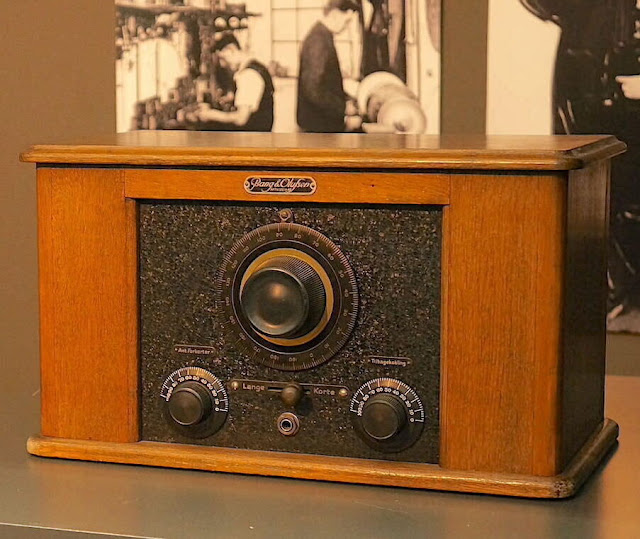 |
| image credit: Bang & Olufsen |
In 1927, the 3lamper tube receiver went into series, and in 1929 the 5lamper model appeared. Both models were intelligently designed, sold well, and, in fact, made the company famous. Young engineers managed to adapt the design of familiar household items to their technological needs, i.e. they used wooden cases and other external decorative elements for their well thought out from a technical point of view of products, which were perfectly combined with the interior of the premises.
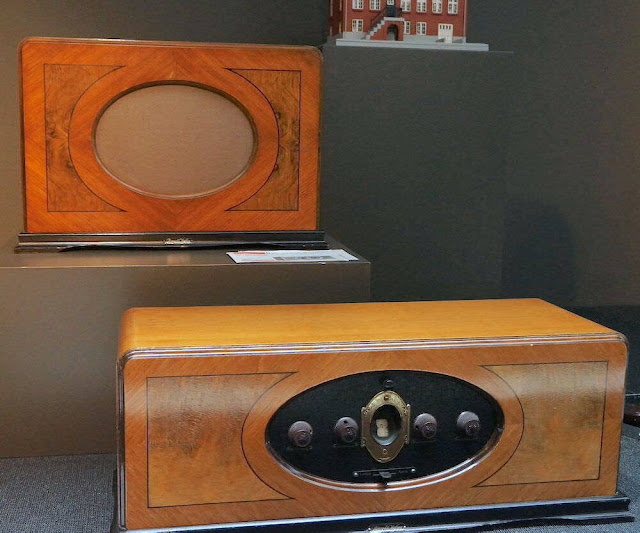 |
| image credit: Bang & Olufsen |
In 1928, Bang & Olufsen began manufacturing dynamic loudspeakers.
The 1930s were a phase of rapid development for B&O. The first Bang & Olufsen radio was released in 1930. A year later, the company developed a dedicated sound system for cinemas. For the production and sale of systems of this kind, friends even organized a separate company BOFA, which was a great success and by 1939 provided sound to most of Denmark's cinemas.
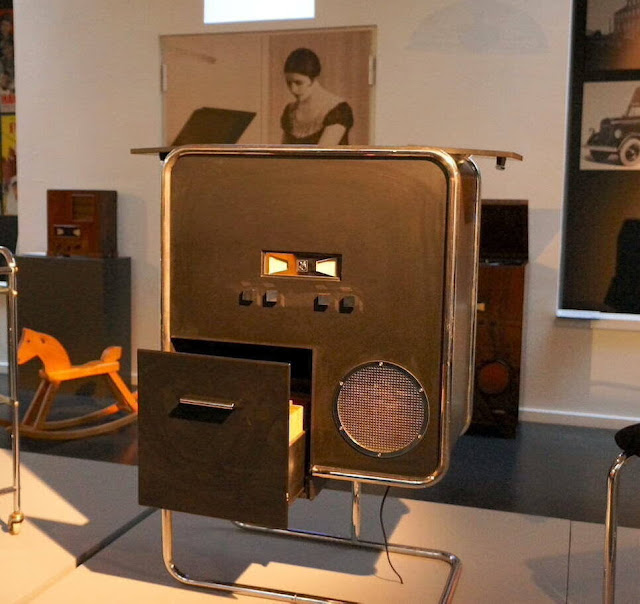 |
| image credit: Bang & Olufsen |
In 1934, the Hyperbo 5 RG Steel, an innovative audio system for those times, was released, which was a combine that outwardly resembled a chair and included a gramophone, speaker, and radio receiver. The Hyperbo case was crafted from steel and styled with contemporary Bauhaus styling.
In 1938, the B & O lineup saw the world's first push-button receiver Master 38CH, and the following year an improved version of Master de Luxe 39 with push-button tuning for 16 radio stations was released.
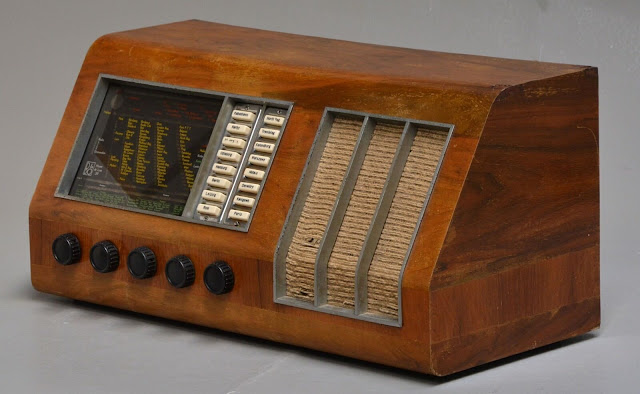 |
| image credit: Bang & Olufsen |
In terms of enthusiasm and efficiency, Olufsen did not lag behind his partner and contributed to the active development of the distribution system - including dealer networks. As a result, Sven's principles of organizing and organizing sales continue to be used by B&O to this day.
Since the early days of the company, Peter Bang and Sven Olufsen have followed two basic rules: to use only high-quality materials and to constantly apply new technologies. For example, immediately after moving to the factory, a new idea was developed and implemented - push-button tuning for radios, which was one of the many innovations that brought the company the Danish Hallmark of Quality award.
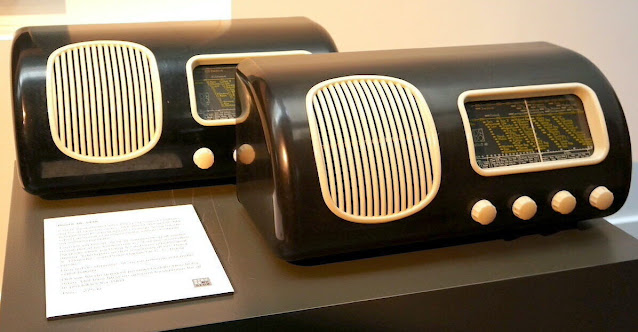 |
| image credit: Bang & Olufsen |
In 1939, another legendary radio called Beolit went into production, which used a rounded case, innovative for those times, made of Bakelite - a fairly strong and lightweight synthetic plastic that can withstand high temperatures.
The Beolit featured a design reminiscent of a car's radiator grille and was also the company's first product with the prefix “Beo” in its name. Later, virtually every device released by Bang & Olufsen will have a name with this prefix.
Wartime and recovery
During the occupation of World War II, the company continued to release new products. In 1941, the Grand Prix 41 radio was introduced with an unusual large tuning scale built into the flip-top lid, i.e. the scale could be removed if necessary. Two years later, the first compact receiver, the Mini 43, appeared.
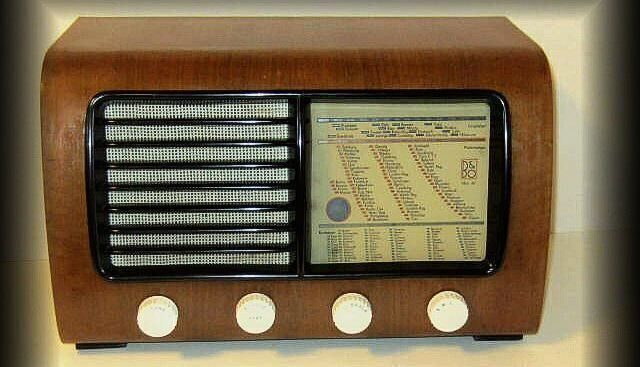 |
| image credit: Bang & Olufsen |
In 1945, the Bang & Olufsen factory was burned down by the German occupiers, but almost at the same time, restoration began, and by 1946 new buildings were put into operation, including the latest technological facilities. A year later, the company released the Beocord 84U, the first wire-based tape recorder in Europe, which became the predecessor to reel-to-reel tape recorders.
 |
| image credit: Bang & Olufsen |
In 1948, Bang & Olufsen introduced its first Hi-Fi radio, the Grand Prix 48CH, and in 1950, the first TV was released under the B&O brand. In 1949 Sven Olufsen passed away.
 |
| image credit: Bang & Olufsen |
In 1952, the massive B&O 508 S TV appeared on the market, with excellent picture quality and decent sound. At the same time, the TV could be freely moved, thanks to the small wheels built into the base. B&O also produced electric shavers in the first half of the 50s.
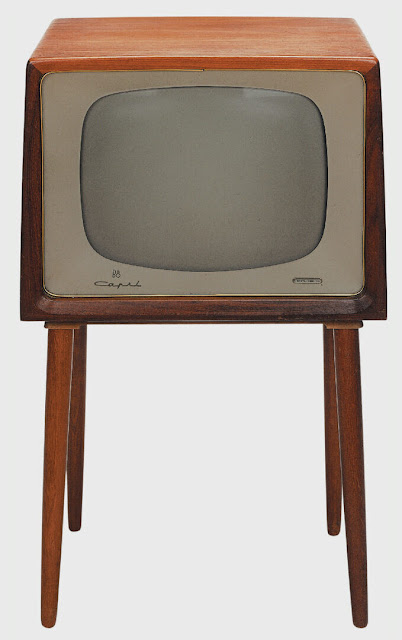 |
| image credit: Bang & Olufsen |
After 1955, the lineup included receivers, radios, and TV series. In 1957, the famous designer Ib Fabiansen joined the company, who had a strong influence on the appearance of B&O technology in those years. 1959 saw the introduction of the 17-inch Teak Beovision Capri TV, mounted on wooden legs. In the same year, Peter Bang passed away.
Genuine art and industrial techno design
In the 60s, new blood flowed into the company - a young generation of progressive designers represented by Henning Moldenhawer and Jacob Jensen. At that time, B&O management tried to invite ambitious professional designers from outside, rather than choose them from the company's staff. This strategy made it possible to more fully implement new brand ideas.
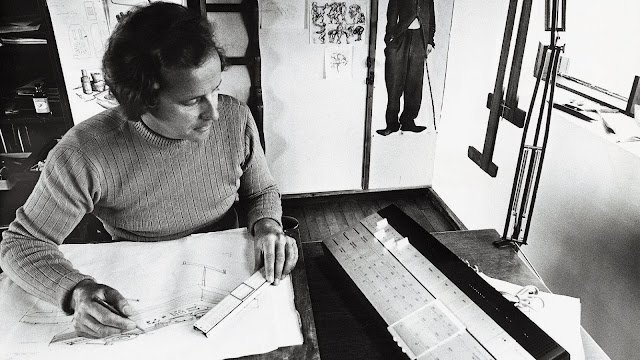 |
| image credit: Bang & Olufsen |
At the same time, young craftsmen were given complete freedom of action, which ultimately formed the Bang & Olufsen corporate identity, the essence of which was a combination of conceptual, sometimes extravagant forms with high-quality electronics. So, in the 64th year in the B&O model range, transistor radio receivers, assembled in more compact cases, appeared. Built on this principle, the Beomaster 900 even set a new trend in design.
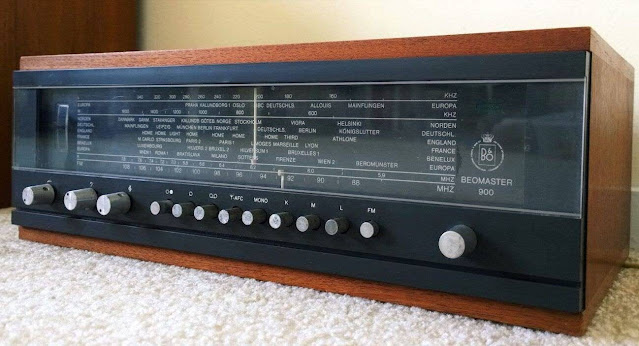 |
| image credit: Bang & Olufsen |
The first B&O model, designed by Jacob Jensen, was the Beomaster 5000 FM stereo tuner with a slide rule front panel. Jensen's works were characterized by strict minimalism and precise lines. The materials usually used were brushed aluminum, as well as white and black plastic. The smooth surfaces of the cases were distinguished by careful processing.
Amplifiers, speakers, tuners, turntables, and other components had unusual sophisticated or futuristic control designs. For example, transparent plastic panels, thin plates, and other innovative elements were used instead of standard knobs and regulators.
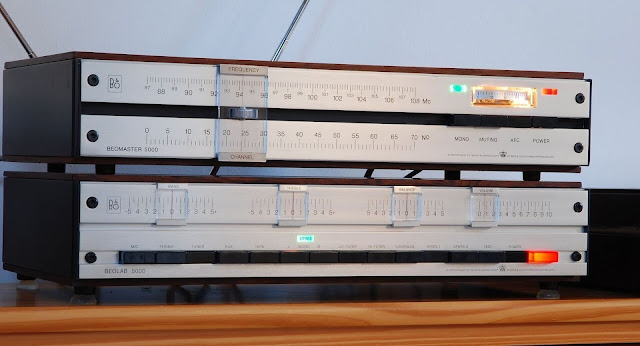 |
| image credit: Bang & Olufsen |
Jacob defined his design philosophy as “different but not strange”, and he expressed his vision of the profession as follows: “designing a fountain pen, writing a poem, staging a play, or designing a locomotive requires the same ingredients: perspective, creativity, new ideas, understanding and, above all, the ability to redo, almost endlessly, over and over again. This "over and over" for me is the cruelest torture. "
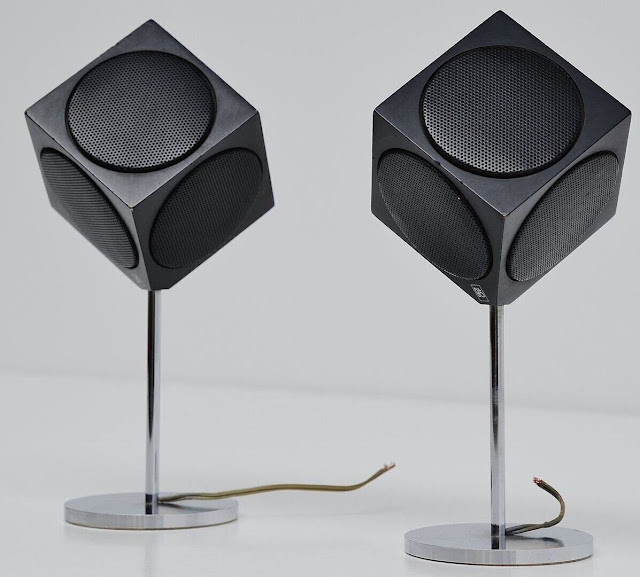 |
| image credit: Bang & Olufsen |
In 1967 he introduced the famous "Cubes" - omnidirectional speakers set on small stands, Beovox 2500 Cube with compact cubic bodies, in each side of which a speaker was mounted (a total of six pieces). During his 27-year career at B&O, Jensen contributed 234 products.
In 1965, at the invitation of Henning and Jacob, an outstanding master of his craft David Lewis joined Bang & Olufsen, who had a hand in the appearance of such models as the active speakers Beolab 6000, the Beocord VX-5000 video recorder, and the Beovox Conor subwoofer, which became exhibits of the New York Museum of Modern Art MoMA (Museum of Modern Art).
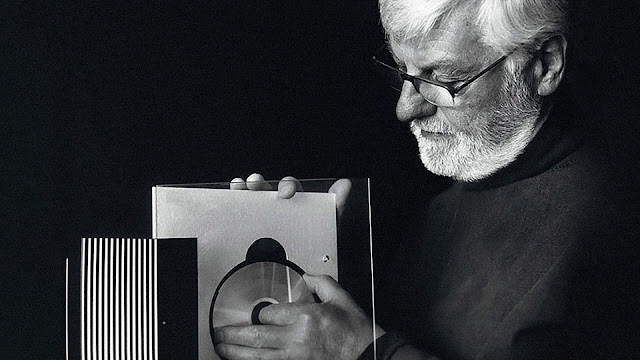 |
| image credit: Bang & Olufsen |
David Lewis was born in 1939 in the UK. In 1960 he graduated from the Central School of Art and Design in London, and a year later he moved to Denmark. The first product developed by Lewis for B&O (with Moldengaver) was the Beovision 400 TV, which had a stand on small wheels and made it easy to move from room to room, and the BeoLab 5000 60-watt amplifier, created with Jensen, was used in its design wood and aluminum, won the prestigious iF Design Award in 1967.
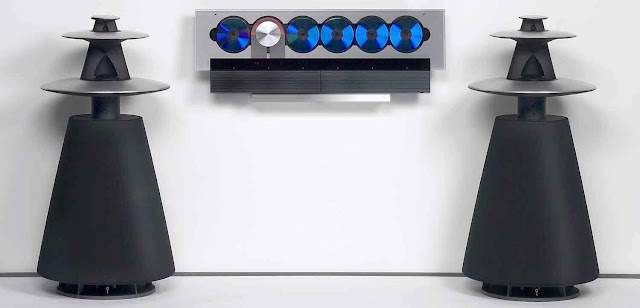 |
| image credit: Bang & Olufsen |
Lewis's many outstanding products include the elegant Beosound 9000 six-disc CD changer, the famous Beosystem 2500 stereo with glass doors that automatically slide open when the hand approaches, BeoLab 8000 speakers inspired by organ pipe, BeoLab 5 speakers using acoustic technology. lenses, the curved BeoCom2 phone, and many others.
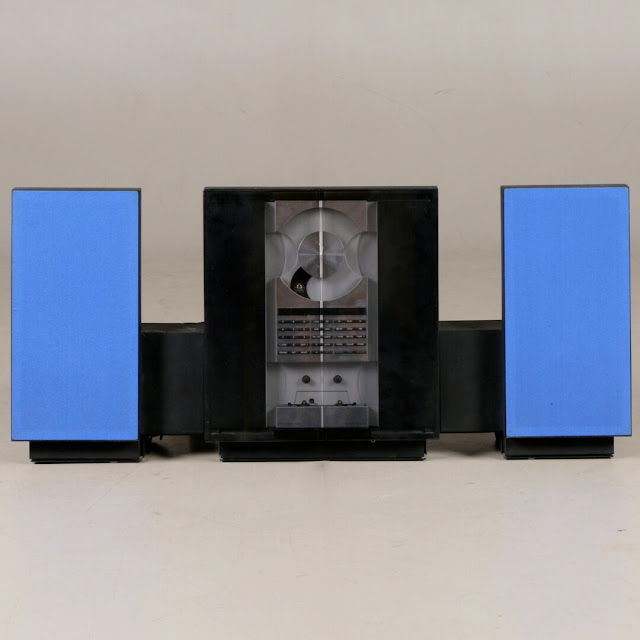 |
| image credit: Bang & Olufsen |
David continued the work of Jensen and Moldengaver, taking Bang & Olufsen away from the age of wood and bulky cases into the sophisticated world of glass, aluminum, and high-quality anodized finishes. Lewis put it this way: "Our range of BeoLab loudspeakers is a rebellion against the identical, heavy wooden boxes that hum in the corners of our homes and dictate how our environment should look and how we should live."
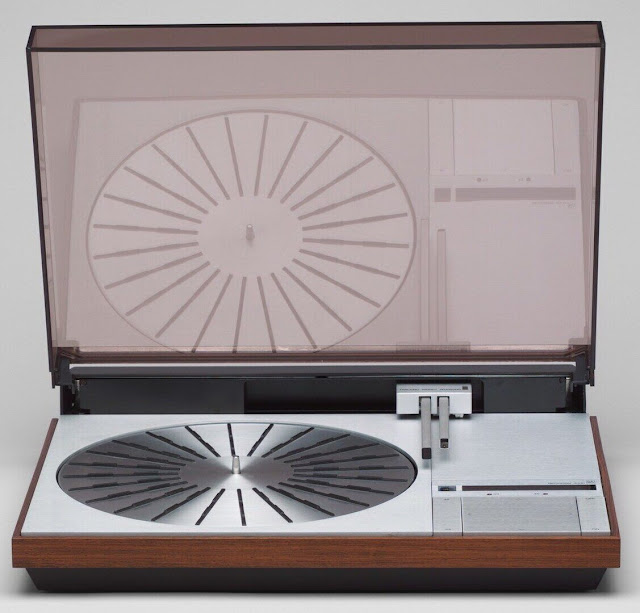 |
| image credit: Bang & Olufsen |
David Lewis preferred to draw everything by hand, rather than using computers, which he saw as too restrictive and too complex machines to work. Instead, he favored clean, simple, and functional designs. “People believe that high quality is synonymous with gadgets and sophistication. I believe that the less you complicate things, the more people will show interest in them, ”argued the designer.
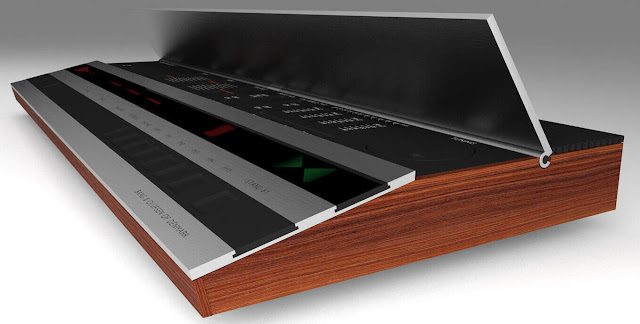 |
| image credit: Bang & Olufsen |
In 1972, B&O introduced its first turntable, the Beogram 4000, equipped with an effective suspension to resist external vibrations and complete with a tangential tonearm. As a result, the model also became an exhibit at MoMA.
1976 saw the introduction of the famous Beomaster 1900 with its striking slim design and touch controls, and in 1978, MoMA hosted an exhibition on Bang & Olufsen products.
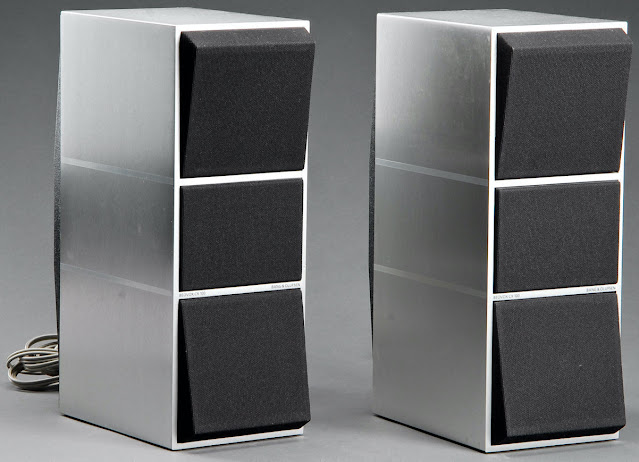 |
| image credit: Bang & Olufsen |
Throughout the 1980s, the company remained true to its ideals and was honored with the national ID Prize. 1984 saw the introduction of one of Bang & Olufsen's most successful passive loudspeakers, the Beovox CX 100, which was minimalist with aluminum enclosures and fabric grills.
In 1985, the Beovision MX 2000 TV was released, which was designed by Lewis. Despite the unusual external forms and an abundance of innovative technological solutions, B&O has always strived to ensure the convenience and ease of use of its products.
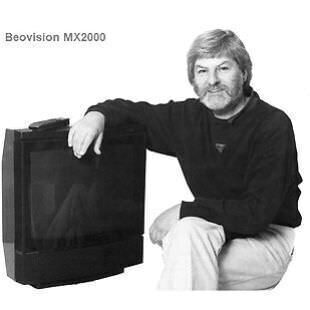 |
| image credit: Bang & Olufsen |
“The problem with new technologies is that they open up too many opportunities, ” Lewis said. "Instead of making life easier, they often make life more difficult because people have more options than they really need."
New approach
In the 90s, B&O opened its brand stores all over the world, which was done specifically with the aim of organizing direct sales, bypassing retailers. Individual audio components were discontinued for the sake of mini-audio systems, which were priced higher than competing brands, as is common practice at Bang & Olufsen. At the same time, all kinds of portable devices, including MP3 players and mobile phones, were also produced under the Danish brand.
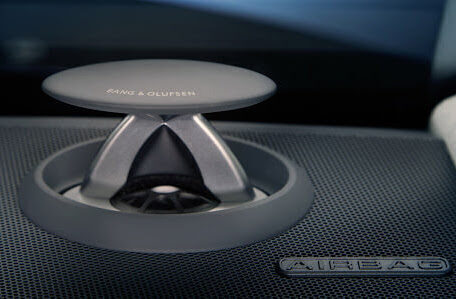 |
| image credit: Bang & Olufsen |
In the early 2000s, the Danish company entered the Car Audio segment and became the official supplier of audio equipment for renowned companies such as BMW, Daimler AG, Audi, and Aston Martin. In 2005, the flagship Audi A8 was equipped with Bang & Olufsen's proprietary audio system built on the BeoLab 5 speakers. When switched on, its tweeters automatically exited the car's dashboard.
Crisis years
The global economic crisis of 2008 had a big impact on B&O, which resulted in a sharp decline in sales. Between 2008 and 2009, the company's annual revenue fell from the US $ 853 million to US $ 528 million, accompanied by a sharp drop in share value.
B & O's restructuring plan called for nearly 300 layoffs in Denmark and abandoned the development of new mobile phones, MP3 players, and standalone systems such as the DVD2 DVD / HDD player and HDR2 HDD recorder. Instead, the company focused on its traditional strengths: high-quality audio and video products and sound systems for the automotive industry. The crisis was overcome only by 2010.
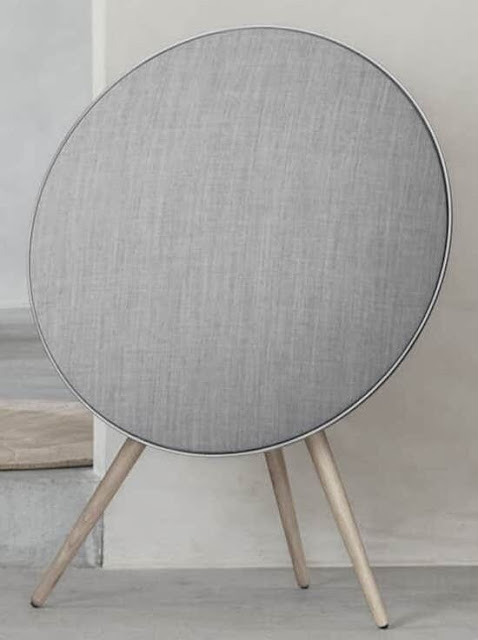 |
| image credit: Bang & Olufsen |
In 2012, the iconic active speaker Beoplay A9 was released with an original design resembling a satellite dish mounted on three wooden legs. The model had an aluminum frame, had built-in digital amplifiers, supported Chromecast, AirPlay 2, Bluetooth, Google Assistant, and was able to integrate into a multi-room system.
 |
| image credit: Bang & Olufsen |
In March 2015, Bang & Olufsen partnered with personal computer and printer manufacturer HP Inc. In the same year, the active speaker system BeoLab 90 was presented - a large omnidirectional floor speaker with a futuristic design, equipped with 18 drivers, branded ICEpower amplifiers, and equipped a system with a fine algorithm for adjusting the phase response of each emitter.
In May of the same year, HARMAN International Industries (which later became a subsidiary of Samsung) announced the completion of the acquisition of the Car Audio business of Bang & Olufsen, and in 2017 the Czech subsidiary of B&O was acquired by the Chinese company Tymphany Corporation.
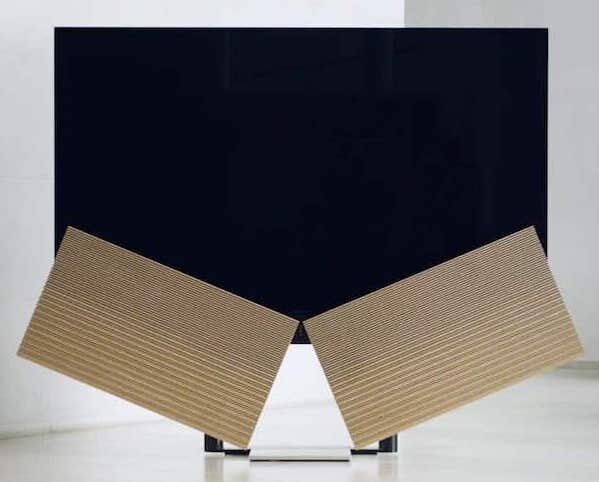 |
| image credit: Bang & Olufsen |
Towards the end of the 2010s, the company introduced a 77-inch OLED Beovision Harmony TV equipped with motorized audio panels. The model supported 4K resolution and video in a high dynamic range HDR (including Dolby Vision), work with online services TuneIn and Deezer, had a 7.1-channel decoder, and could easily be integrated into a multi-room installation.
In January 2020, B&O again suffered losses due to the failure of sales of its $ 500 headphones.
Present time
Today B&O products are divided into the following segments: loudspeakers, headphones, televisions, and accessories. However, virtually every Bang & Olufsen branded product is fundamentally different from standard products from other manufacturers.
The company remains true to its ideals and, in fact, belongs to the luxury segment in the world of audio, focusing on design components. Today, Bang and Olufsen's marketing strategy continues to target AV customers looking for quality, innovative technology, and unique aesthetic appeal.
As of 2017/2018, B&O employed 1,028 people. Bang & Olufsen is still headquartered in Struer, 95 years ago. B&O also has a small plant at its disposal where all the work related to the processing of aluminum is carried out.
Interesting Facts
In 1932, the famous B&O brand logo appeared. According to some reports, the logo was made by a certain 16-year-old Danish artist Henning Dahl Mikkelson, who sold it to Olufsen for 10 kronor.
Former Apple CEO Steve Jobs was a fan of Bang & Olufsen products and enjoyed using them, and the scroll wheel design of the first iPods closely resembles that of the BeoCom 6000 cordless telephone designed by Henrik Sorig Thomsen.
The B&O family of reel and cassette recorders is called Beocord, and the Danish company was one of the pioneers in compact cassette technology and was even involved in the development of Dolby HX and Dolby HX Pro dynamic bias systems.
With its uniquely elegant design, the Beogram 6000 tangential arm turntable is on display at the New York Museum of Modern Art.
B&O also produced microphones called Beomic (dynamic microphone DM-1, ribbon models BM-2 and BM-3, etc.)
 |
| image credit: Bang & Olufsen |
The Beosound Edge wireless speaker, developed in collaboration with designer Michael Anastassiades and first presented at IFA 2018, resembles a giant coin, wheel, washer, or cylinder with a diameter of 0.5 m, while the model is equipped with six D- amplifiers. class with a total power of 800 W, can be installed on the floor, on a rack, and even mounted on a wall.
Onboard there is one 10 "woofer driver, two 4" midrange drivers, and a pair of tweezers. The design uses an accelerometer, so to adjust the volume level, it is enough to slightly roll the speaker forward or backward - then it will return to its original position by analogy with a tumbler doll. The model has an active bass reflex port, which is closed when playing at low volume levels and automatically opens when the sound pressure increases, like a rising spoiler of a car picking up speed.
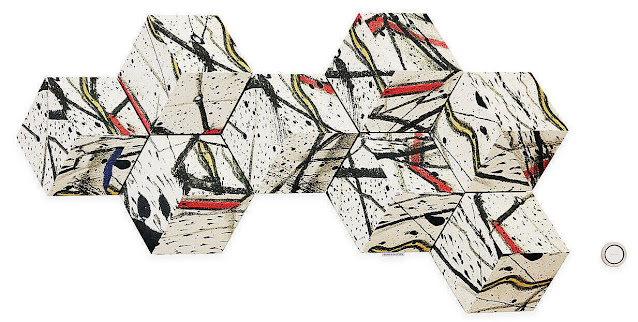 |
| image credit: Bang & Olufsen |
The device can be controlled using voice assistants, support Apple AirPlay 2, Chromecast, Bluetooth, and proprietary technology that allows you to create a multi-room ecosystem. The Beosound Edge speaker allows you to divide the room into two zones - for active and background listening. Alternatively, you can provide 360 ° surround sound.
Renowned filmmaker David Lynch collaborated with B&O. Thus, the acoustic systems Beosound Shape and Beoplay M5, A9, and P2 are designed using fragments of his paintings.












.jpg)



0 Comments